Related Research Articles

William Bartram was an American naturalist, writer and explorer. Bartram was the author of an acclaimed book, now known by the shortened title Bartram's Travels, which chronicled his explorations of the Southern Colonies of British North America from 1773 to 1777. Bartram has been described as "the first naturalist who penetrated the dense tropical forests of Florida".
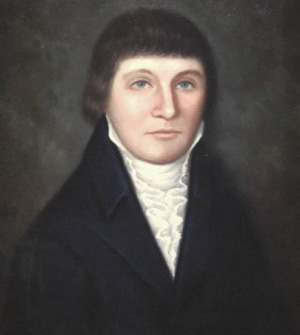
Richard Caswell was an American politician and lawyer who served as the first and fifth governor of the U.S. state of North Carolina from 1776 to 1780 and from 1785 to 1787. He also served as a senior officer of militia in the Southern theater of the American Revolutionary War. As a delegate to the First Continental Congress, he was a signatory of the 1774 Continental Association.
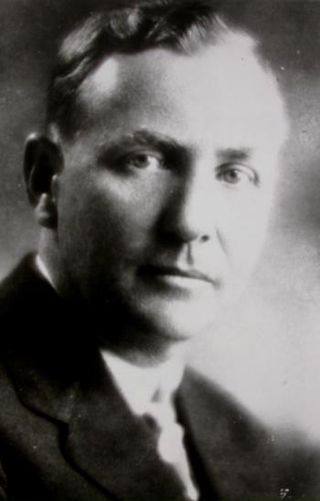
John Christoph Blucher Ehringhaus was an American politician who served as the 58th governor of North Carolina, serving from 1933 to 1937.

Samuel Johnston was an American planter, lawyer, Grand Master of Freemasons, slave holder, and statesman from Chowan County, North Carolina. He represented North Carolina in both the Continental Congress and the United States Senate, and he was the sixth Governor of North Carolina.

Cornelius Harnett was an American Founding Father, politician, merchant, plantation owner, and slaveholder from Wilmington, North Carolina. He was a leading American Revolutionary statesman in the Cape Fear region, and a delegate for North Carolina in the Continental Congress from 1777 to 1779 where he signed the Articles of Confederation. Cornelius Harnett is the namesake of Harnett County, North Carolina.
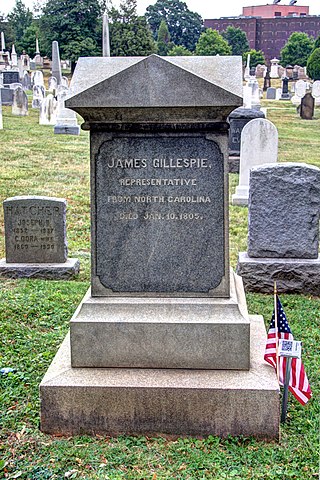
James Gillespie was an American lawyer, politician, and Revolutionary War veteran from North Carolina. He was first elected to the U.S. House of Representatives in 1793 and died in office on January 10, 1805. Prior to serving in the U.S. Congress, Gillespie was a member of the North Carolina House of Commons, the North Carolina Senate, the North Carolina Council of State, and held various other positions in the state government. An ardent Anti-Federalist, he voted twice against the ratification of the U.S. Constitution.
William Harmon is James Gordon Hanes Professor Emeritus in the Humanities at the University of North Carolina at Chapel Hill, author of five books of poetry and editor of A Handbook to Literature. His most recent poetry has appeared in Blink and Light.
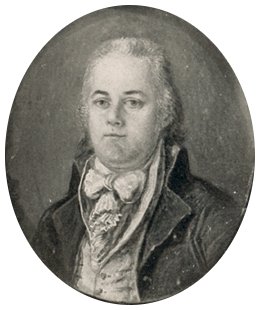
Andrew Ellicott was an American land surveyor who helped map many of the territories west of the Appalachians, surveyed the boundaries of the District of Columbia, continued and completed Pierre (Peter) Charles L'Enfant's work on the plan for Washington, D.C., and served as a teacher in survey methods for Meriwether Lewis.

The Dialectic and Philanthropic Societies, Inc. commonly known as DiPhi or The Societies, are the original collegiate debating societies at the University of North Carolina at Chapel Hill, and together comprise the oldest student organization at the University, as well as the oldest public student organization in the United States. During the academic year, the Societies hold regular meetings at 7:30 PM on Mondays in the Dialectic Chamber at the top of the New West Building. The Societies also hold occasional social events in the Philanthropic Chamber at the top of New East Building.
Ebenezer Pettigrew was a Congressional Representative from North Carolina. He was born near Plymouth, North Carolina, March 10, 1783. He studied under tutors at home and later attended the University of North Carolina at Chapel Hill where he was a charter member of the Debating Society, which became the Dialectic and Philanthropic Societies. He was a planter slaveholder, and later became a member of the State senate in 1809 and 1810. He was elected as an Anti-Jacksonian to the Twenty-fourth Congress, afterwards resuming his agricultural pursuits. He was also a slave owner. He died at Magnolia Plantation on Lake Scuppernong, July 8, 1848, and was interred in the family cemetery.
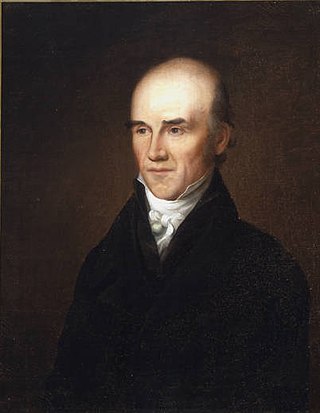
Joseph Caldwell was a U.S. educator, Presbyterian minister, mathematician, and astronomer. He was the first president of the University of North Carolina at Chapel Hill, holding the office from 1804 until 1812, and from 1816 until his death in 1835.
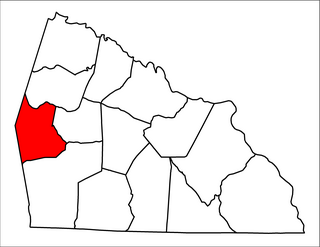
Mount Ulla Township is one of fourteen townships in Rowan County, North Carolina, United States. It is currently the smallest township in Rowan County by population.

The High Hills of Santee, sometimes known as the High Hills of the Santee, is a long, narrow hilly region in the western part of Sumter County, South Carolina. It has been called "one of the state's most famous areas". The High Hills of Santee region lies north of the Santee River and east of the Wateree River, one of the two rivers that join to form the Santee. It extends north almost to the Kershaw county line and northeasterly to include the former summer resort town of Bradford Springs. Since 1902 the town has been included in Lee County.
Duncan Stewart was a veteran of the American Revolutionary War, slave owner, frontiersman, and politician. He holds the very rare distinction of having served three separate states state legislatures over his life, in North Carolina, Tennessee, and Mississippi.

David Ker, was an Irish-born American Presbyterian minister, educator, lawyer and judge. He was the first presiding professor of the University of North Carolina.

Glenwood is a historic plantation with a Greek Revival house and several outbuildings, located near Enon, Yadkin County, North Carolina.

Simmons Jones Baker was a physician, planter, legislator, and slave owner in North Carolina.
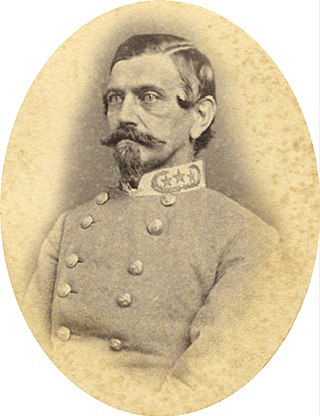
James Cantey was a Confederate States Army brigadier general during the American Civil War. He was a lawyer, slave owner, state legislator in South Carolina and officer in the Mexican–American War, and a slave owner in Alabama both before and after the war.
John Ker (1789–1850) was an American surgeon, planter, and politician in Louisiana. Together with several major Mississippi planters, in the 1830s Ker co-founded the Mississippi Colonization Society (MCS), promoting the removal of free people of color to a colony in West Africa. The MCS modeled itself after the American Colonization Society, the national organization for which Ker later served as a vice president.
Marmaduke Swaim Robins was a teacher, lawyer, politician and newspaperman in North Carolina. He served as private secretary to North Carolina governor Zebulon Vance and as a state legislator.
References
- ↑ Weeks 1887, p. 5.
- ↑ Battle 1907, p. 75–7.
- ↑ Battle 1907, p. 73.
- ↑ Battle 1907, p. 77.
- 1 2 3 4 "David Gillespie Papers, 1797-1799, 1825 #5483-z". Southern Historical Collection, Wilson Special Collections Library. University of North Carolina at Chapel Hill Libraries.
- 1 2 Holmes, Jack D. L. (April 1966). "The Southern Boundary Commission, the Chattahoochee River, and the Florida Seminoles, 1799". The Florida Historical Quarterly. 44 (4): 312–337. JSTOR 30147229.
- 1 2 "David Gillespie Papers, 1797-1799, 1825". African American Documentary Resources. University of North Carolina at Chapel Hill Libraries.
- ↑ Battle 1907, p. 162.
- ↑ "North Carolina State House of Commons 1807". Carolana.
- ↑ "North Carolina State House of Commons 1812". Carolana.
- ↑ "North Carolina State House of Commons 1813". Carolana.
- ↑ "The First Brigade of NC Militia". Carolana.
- ↑ Allen 1935, pp. 484–5.
- ↑ "Death at Red Springs". The Weekly Star. Vol. XXIX. Wilmington, North Carolina: North Carolina Newspapers, Digital North Carolina. June 10, 1898. p. 1.
- ↑ Parramore, Thomas C. (1979). "Bartram, William". NCpedia. Retrieved July 5, 2024.
- ↑ Bartram, John; Harper, Francis (December 1942). "Diary of a Journey through the Carolinas, Georgia, And Florida from July 1, 1765, to April 10, 1766". Transactions of the American Philosophical Society. 33 (1): 81. doi:10.2307/1005551. JSTOR 1005551.
- ↑ "Historical News and Comments". The Mississippi Valley Historical Review. 23 (2): 324. September 1936. JSTOR 1893315.
- ↑ "David B. Gillespie papers". Dolph Briscoe Center for American History, University of Texas at Austin.